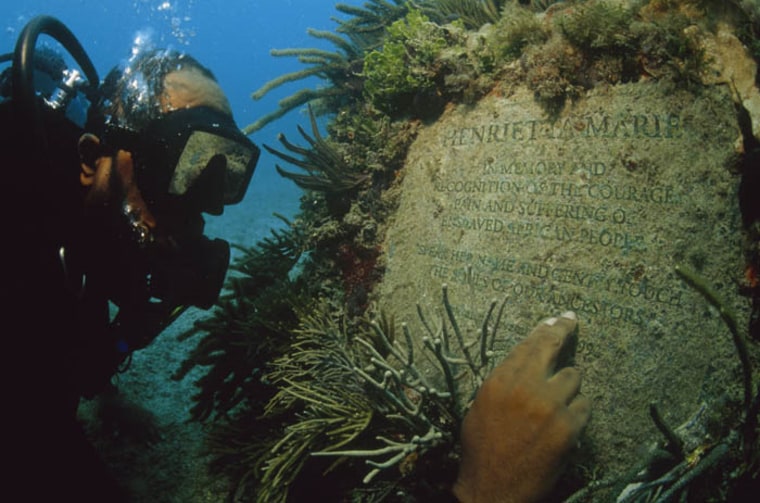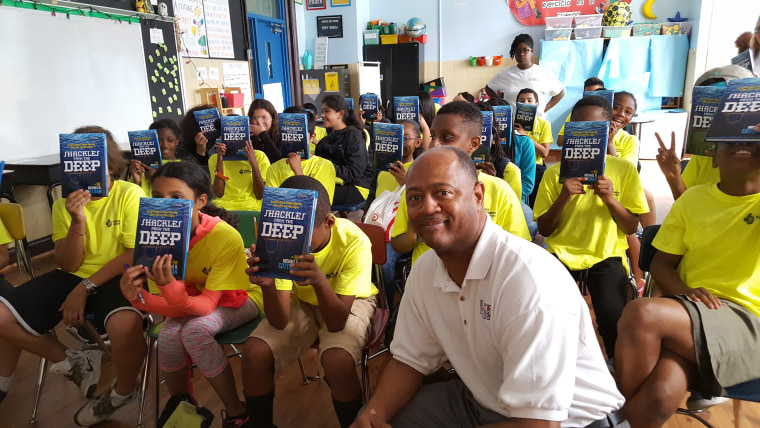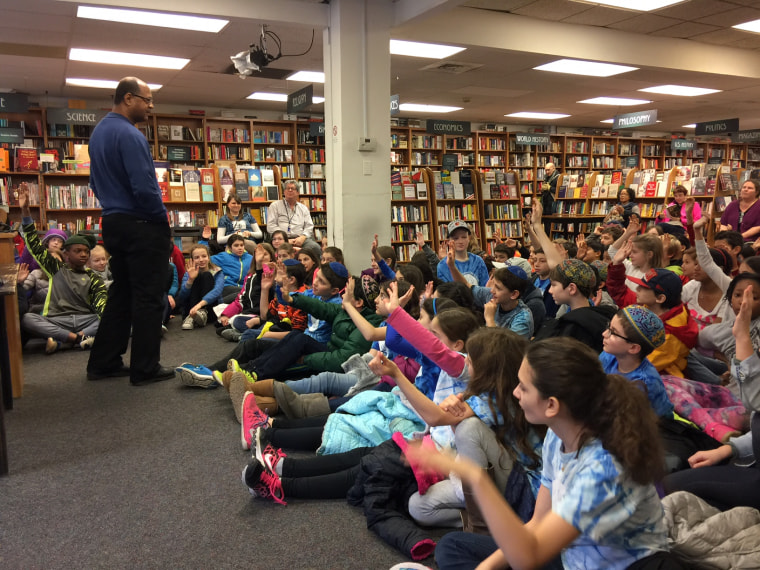Exploring a sunken slave ship was beyond any dream Michael Cottman could have imagined as a young child in his native Detroit.
Fascination with the underwater adventure TV series “Sea Hunt” lit a fire in Cottman to learn scuba diving, quite a stretch for a young, black boy growing up in a landlocked city. Realizing that dream and combining it with his profession as a journalist later in life led him to capture the incredible story of the Henrietta Marie, the recovered slave ship he was fortunate enough to explore as part of the National Association of Black Scuba Divers and later research across several continents in the early 90s.
That odyssey became the 1998 book, “The Wreck of the Henrietta Marie: An African American’s Spiritual Journey to Uncover a Sunken Slave Ship” and the paperback renamed “Spirit Dive” in 1999. Nearly three decades later, the story lives on as National Geographic released the young adult version, “Shackles from the Deep: Tracing the Path of a Sunken Slave Ship, a Bitter Past, and a Rich Legacy” for ages 10 to 16, earlier this year.

The Pulitzer Prize winner, who described “Shackles from the Deep” as “part detective story, part underwater mystery, part adventure tale,” uses the book to retrace his journey from “Sea Hunt” to the Henrietta Marie and beyond, including his travels to London to research where the slave ship originated as well as to the various ports to which it sailed and coasts off of Africa where it may have packed in its captives.
Before shipwrecking near Key West in 1700, the Henrietta Marie, according to research, dropped off 250 kidnapped Africans in Carlisle Bay, Barbados and 190 in Port Royal, Jamaica. But it wasn’t until 1972 when black Panamanian underwater treasure hunter Moe Molinar took note of shackles and a cannon from a ship that the contemporary Henrietta Marie story began.
Other divers encountered the ship before Molinar but their focus was on monetary treasures. In 1983, marine archaeologist David Moore discovered the watch bell from the ship, identifying it as the Henrietta Marie. Exploratory dives, including some with black divers, followed in the 90s and Cottman was able to join in.

Through those dives, the image of shackles — made just for children — was forever seared into his memory and his role as the ship’s chief storyteller began.
Despite this horror dating back centuries, Cottman firmly believes that the story of the Henrietta Marie, whose exhibition is on permanent display at the Mel Fisher Maritime Museum in Key West, still resonates.
Related: ‘A Beautiful Ghetto’: Devin Allen’s Images Proclaim Baltimore Resistance
“I thought it was important for young people to know about the African slave trade, but also to know the African genius that was brought to these shores by African people through mathematics and science and poetry, culture and music, and that there’s still an uplifting element to this story because we’ve survived and excelled,” Cottman shared, recalling a book tour at the beginning of the year that placed him in front of about 1500 kids of various racial and ethnic backgrounds across five states.
“I wanted them to know that this book is timely [in] this current racial and political climate because it teaches these young readers to understand and appreciate cultural differences — because we’re living and interacting in this ever-expanding multicultural society,” Cottman said.

To bring the experience to life, Cottman shared images of the the artifacts -- shackles, pewter ware and mugs used by slave ship captains, and trading beads -- with the students.
“What I am hoping with this book is that it gives young readers an opportunity to learn and understand the history of slavery through one slave ship, the Henrietta Marie,” Cottman explained. “There’s no better illustration for racial partnership to me than introducing, in the book and in my lectures, the partnership of the National Association of Black Scuba Divers and the white marine archeologists we worked with to explore the Henrietta Marie.”
Related: Historians Uncover Slave Quarters of Sally Hemings at Thomas Jefferson’s Monticello
Although both groups were drawn to the relic for different reasons—an emotional connection for the black divers and an archeological one for the white divers -- the takeaway for young readers is to work together for a common purpose.
“We confronted a few prickly racial issues along the way, but the bottom line is we worked together toward the same passion,” said Cottman. “That passion was to learn more about the slave ship.”
With film and TV opportunities also in the works, Cottman may truly bring this story full circle, touching another young kid the same way “Sea Hunt” touched him at that age. “I’ve been given an incredible opportunity,” he said of his journey. “This is an important story. It’s important for everybody.”
